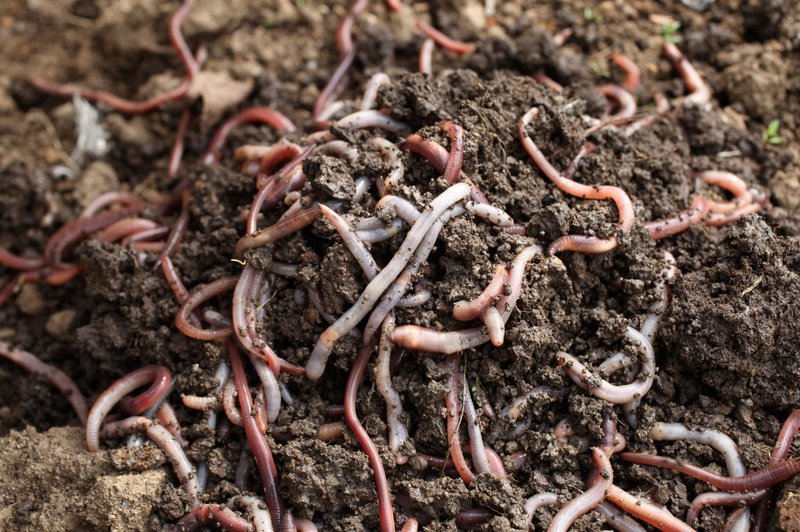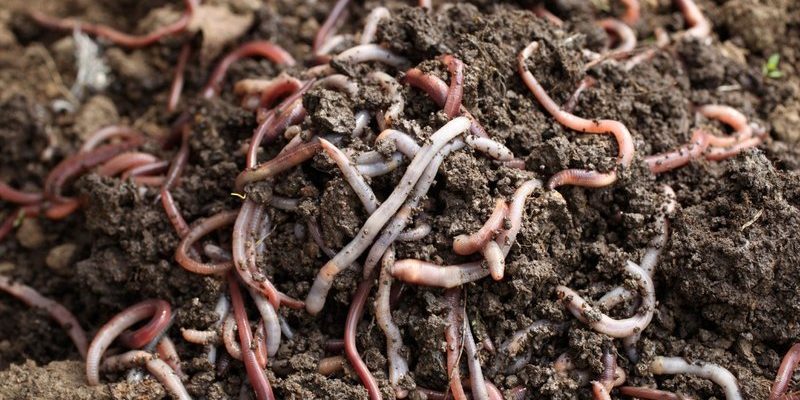
You might be wondering which *earthworm species* are best for vermicomposting. Just like picking the right ingredient makes a recipe shine, choosing the right worms can make a big difference in your composting success. In this article, we’ll dive into the top five earthworm species that are perfect for this eco-friendly process. Let’s dig in!
1. Red Wiggler Worms
When it comes to vermicomposting, red wigglers (Eisenia fetida) are the rock stars of the worm world. They thrive in the rich, decomposing matter found in compost piles and are super efficient at turning waste into valuable compost. You might spot them easily thanks to their vibrant reddish hue and wiggly movement.
One reason red wigglers are a top pick is their ability to consume food scraps quickly. They can eat about half their body weight in food each day! This means they’ll help you manage your organic waste smoothly, all while producing nutrient-rich worm castings that your garden will love. Honestly, if you want to start vermicomposting, these worms are a great first choice.
Another perk of red wigglers is their adaptability. They can thrive in various conditions, so whether you’re composting in a bin or a larger setup, they’ll do well. Just keep moisture levels in check—not too wet, not too dry—and you’ll have happy worms working hard for you.
2. European Nightcrawlers
Next up, we have European nightcrawlers (Eisenia hortensis). These guys are not just useful for composting but also popular for fishing! They tend to grow larger than red wigglers, making them a favorite among worm enthusiasts.
European nightcrawlers can tolerate a wider range of temperatures, which is great if you live in an area with fluctuating climates. This means you can expect them to flourish in your compost bin throughout most of the year. They consume a bit more food than red wigglers and can thrive in less optimal conditions, but they’re slower to reproduce.
If you’re looking for a worm that can not just help with composting but also enrich your soil, European nightcrawlers might be right up your alley. Their castings are rich in nutrients, making them excellent for your plants. Plus, they can help aerate the soil, improving its structure.
3. African Nightcrawlers
The African nightcrawler (Eudrilus eugeniae) is another amazing choice for vermicomposting. These warm-loving worms are known for their impressive size and rapid reproduction. If you’re interested in creating compost quickly, African nightcrawlers might just be the right worm for you.
These worms prefer warmer temperatures, typically thriving best in 70°F to 85°F (21°C to 29°C). Just keep this in mind when managing your composting setup. They can consume a lot of material quickly, sometimes up to twice their body weight each day! That rapid processing ability can help you deal with kitchen scraps and yard waste faster than other species.
One thing to consider is their sensitivity to cold. Therefore, if you live in a cooler area, you’ll want to ensure they’re kept in a warm spot or indoors during winter months. Their large castings are super nutrient-dense, which means your plants will be healthier and more productive.
4. Red Earthworms
Now let’s talk about red earthworms (Lumbricus rubellus). These little guys are very similar to red wigglers but have different habits. They tend to prefer a more traditional soil habitat compared to the compost-loving red wigglers. However, they can still be beneficial in a vermicomposting setup.
Red earthworms are excellent at breaking down organic matter and can help in creating rich compost over time, although they might be slower than their wiggly cousins. They can thrive in cooler temperatures, making them a solid option if you live in a more temperate region.
If you’re practicing vermicomposting in an outdoor bin, red earthworms can adjust well to their environment. They prefer a balanced moisture level, which allows them to thrive and produce good castings for your garden.
5. Blue Worms
Last but not least, we have the blue worm (Perionyx excavatus). Like their name suggests, these worms have a bluish tint and are known for thriving in warm climates. They’re very efficient composters and can handle a sizable amount of food scraps, making them effective at producing quality worm castings.
Blue worms are particularly good at breaking down kitchen waste and are often recommended for those looking to compost more fruit and vegetable scraps. They reproduce quite rapidly, meaning you could grow your worm population if you’re running a larger composting operation.
Since they prefer warmer temperatures, it’s best to keep them indoors or in a controlled environment during colder months. Here’s the thing: if you’re focused on speed and efficiency in your composting efforts, blue worms might be the way to go.
In summary, choosing the right earthworm species for vermicomposting can significantly impact your composting success. Red wigglers, European nightcrawlers, African nightcrawlers, red earthworms, and blue worms each bring unique strengths to the table. Depending on your environment, the amount of food waste you have, and your composting goals, you can pick the perfect worm for your needs.
By investing time in selecting the right worms, you’re setting up a thriving composting system that not only reduces waste but also enriches your garden soil. So grab some worms, start composting, and watch your garden flourish! Happy composting!

